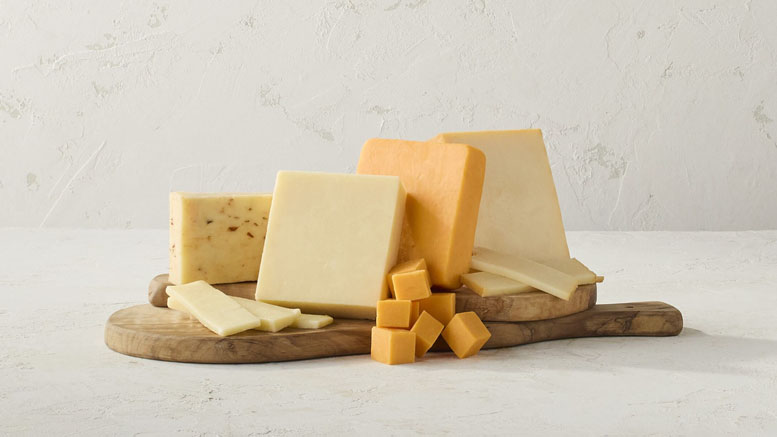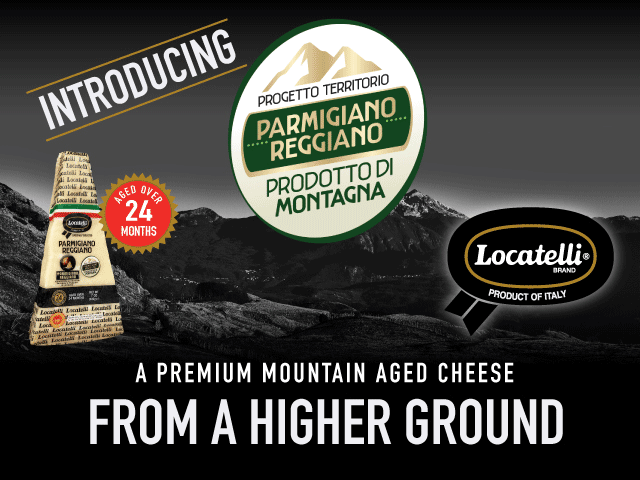Beyond the Block: Exploring New Frontiers in America’s Favorite Cheese
January 14, 2025 | 6 min to read
Cheddar, a staple in the cheese world, boasts a diverse range of flavors, textures, and traditions, originating in the English village of Cheddar in the 12th century. With varying aging periods, cheddar can range from crumbly and sharp to creamy and mild. Although it lacks a Protected Designation of Origin, traditional areas can label their products as “West Country Farmhouse Cheddars.” Currently, there's a growing interest in unique, flavorful cheddars and new formats like cracker cuts, reflecting consumer preferences.

Cheddar represents a variety of flavors, textures and traditions.
Cheddar is undoubtedly a staple in the cheese world, anchoring everything from gourmet cheese boards to grilled sandwiches to lunch box and briefcase snacks across America. This versatile cheese has become so ubiquitous that it’s easy to take for granted.
Yet cheddar represents a large variety of flavors, textures and traditions, from sharp, crumbly aged varieties to mild, creamy young cheddars. The more consumers explore cheddar, the more there is to learn and enjoy about this iconic food.
BRIEF HISTORY OF CHEDDAR
Historians believe that this beloved golden cheese was first created in the English village of Cheddar early in the 12th century. As with all other cheeses, cheddar is made by heating milk and adding rennet to form curds. The curds are separated from the whey and formed into a solid. The curds are cut, stacked, and drained — a process called “cheddaring.”
One of the hallmarks of cheddar is its aging time. Sharp cheddar is aged for 9 months to a year, while extra sharp is aged over a year. Cheddar is naturally white — the golden-orange hue comes from a natural dye called annatto, made from a seed.
Cheddar may be made anywhere in the world and has no Protected Designation of Origin (PDO). But as of 2007, cheddars made in the traditional areas of Dorset, Somerset, Devon, and Cornwall may be called “West Country Farmhouse Cheddars.”
Regional cheddars each have their own identities, giving consumers a lot of room to explore. “There’s going to be slightly different flavor profiles on a Wisconsin cheddar compared to a New York or Vermont cheddar, compared to an English or an Irish cheddar,” says Nicholas Stoller, Black Creek Cheddar marketing manager at Saputo USA, a global dairy processor headquartered in Milwaukee, WI. “Consumers do tend to gravitate more toward the cheddars that are closer to them,” he adds.
When Craig Giles, national foodservice sales manager for Cabot Creamery, got into the cheddar business about 20 years ago, he says flavored cheddars were popular, then they declined, and now they are surging again. Cabot Creamery, a cooperative formed from 94 families in Cabot, VT, in 1919, was the first B Corp-certified dairy cooperative.
He says consumers are also seeking out new or different formats of cheddar. “Sales of the 8-ounce bar are not as high as they have been,” says Giles. “But people are buying more cracker cuts and more individual wraps.”
NEW FLAVORS
“People want to see a cheddar with really big flavors, or, a very good flavor,” says Giles. “We’re seeing cheeses with a little sweetness to them and bigger acid levels being popular with customers.”
Stoller is seeing specialty cheddar and deli cheddar growing again following a lull during the pandemic years. Consumer familiarity with cheddar works in its favor, unlike blue cheeses or goat cheeses which are less spontaneously purchased.

Flavored cheddars are a growth driver within the category. “Flavor varieties in the category that we see as popular and continuing to grow include smoke, hot peppers, garlic, and truffle,” says Stoller. “Within these flavor types, calling out specific varieties of pepper, such as habanero, or types of wood seem to be an especially popular trend.”
NEW FORMATS
Kurt Dammeier is the founder of Beecher’s Cheese, a cheesemaking company based in Seattle, WA, with products sold at grocery stores nationwide. “I have noticed there is increasingly more cheddar in the snacking category,” says Dammeier. “More sticks, more small format pieces of cheddar, bite-sized pieces. What used to be the just province of string cheese is now expanding into cheddar.”
Dammeier says Beecher’s cheese sticks are one of the fastest-growing categories of the business. “We’re really unique in that we sell aged cheddar in a stick format,” he says. “We offer people the type of cheese that you normally can’t buy in stackable pieces.”
At Saputo, the marketing team is introducing consumers to their Artisan Series, which they sometimes call “hybrids.” These are cheddars, which are described as having Parmesan or Gruyere notes. “A more unique flavor, a little more specialized than what you might just find in a regular cheddar,” says Stoller.
For Cabot, bold flavors like habanero cheddar are their top sellers. They also recently reintroduced smoky bacon due to its enduring popularity. Cabot is leaning into convenience packaging, such as cracker cuts. “People are also willing to try a flavor in a different format,” says Giles.
Stoller also agrees that convenience packaging is growing in demand. “One thing that I know is of interest among consumers is resealability in packaging,” he says. “We’re seeing a little of that, but there’s not been a mainstream wave of it.”
Zoe Brickley is director of communications and e-commerce for Jasper Hill Farm, maker of Cabot Clothbound cheddar in Greensboro, VT. Cabot Clothbound, a cave-aged cheese that is celebrating its 20th anniversary this year, is Jasper Hill Farm’s biggest seller in the category.
Clothbound cheddars retail for about $30 to $40 a pound, and are typically cut and wrapped in independent outlets. Brickley says the pandemic eroded cutting and wrapping higher-end cheese in favor of exact weights.
“A key insight for us is that retailers were finding it more and more difficult to do that labor in-store,” she says. “And of course, if you have someone cutting and wrapping the cheese, you have someone there tasting the cheese and selling those specialty varieties. So, we’re working on a packaging solution that represents the value of the high-end cheese and can take care of its natural rind, which is a little bit tricky.”
REACHING CONSUMERS
Educating consumers about the diverse uses and qualities of different cheddars can broaden their appreciation for the category. Deli cheddars often have unique characteristics, compared to standardized dairy aisle varieties. While mild, medium, sharp, and extra sharp cheddars have subtle differences, specialty products offer truly distinctive flavors. “Unique and differentiated flavor varieties are really what makes those products special and what makes them stick out to consumers,” says Stoller.
Dammeier advocates using aged or cloth-bound cheddar as a pasta topping, challenging the dominance of Parmesan. “Aged cheddar is fantastic and actually more flavorful,” he says. Beecher’s showcases this versatility in their restaurants, demonstrating cheddar’s potential. “We’ve long been about not just eating better cheese, but using better cheese in your cooking.”
Delis can promote creative cheddar uses through sampling and strategic marketing. Signage, promotions, and product positioning can encourage consumers to try new varieties. Stoller emphasizes driving website traffic for pairings and recipes, while collaborating with retailers to showcase new products and ideas.
INTO THE FUTURE
Cheddar remains an exciting and diverse category in the cheese world. Retailers and delis have an opportunity to cater to consumer needs and preferences by offering a wide variety of cheddars. Delis also should encompass different flavors, regional specialties, and highlight characteristics, such as meltability.
By providing education on these qualities, retailers can ensure that consumers find the perfect cheddar for their purposes, whether it’s for weeknight meals, snacking or gourmet applications.
36 of 82 article in DeliBusiness Winter 2024-2025

